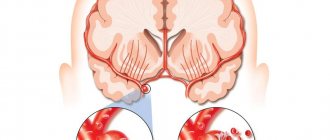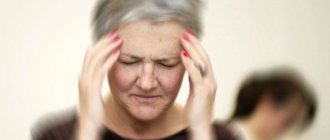- home
- Helpful information
- Tube feeding
Some serious diseases and injuries can disable important reflexes of the body. Without the swallowing function, independent food intake becomes impossible, as a result the patient has to be fed through a special device - a nasogastric tube. This technology can be used not only in hospitals, but also at home.
What is a probe
A nasogastric tube is also commonly called a feeding tube. It is inserted directly into the patient's stomach through the nasal passage and esophagus. It is essentially a hollow tube with rounded ends to prevent tissue damage during insertion. The tube is made of light, elastic and absolutely hypoallergenic material. There is a special funnel on the outside. Through it, food is supplied to Zhane using a syringe. In the normal state, the hole is protected by a special cover, which prevents foreign objects from entering the probe. Employees of the patronage service know all the intricacies of feeding a patient through a tube.
Main indications for use
Eating through a tube is carried out in cases where the patient is not able to do this on his own. His swallowing function is depressed, there is no clear consciousness, or there are serious lesions in the throat and oral cavity. The probe is most often installed in the following cases:
- After a stroke, if we are talking about damage to the areas of the brain that control the swallowing reflex, the function may be partially or completely inhibited. A return to normal eating habits is possible after completion of rehabilitation. In case of extensive damage and advanced age of the patient, enteral nutrition can be permanent.
- For physical injuries - head injuries, severe swelling of the tongue and larynx.
- If the patient is in a coma or unconscious.
- With the development of psychological disorders, when the patient refuses to eat.
- Neurological diseases (multiple sclerosis, Parkinson's, Alzheimer's), accompanied by corresponding disorders.
- During surgical interventions in the gastrointestinal tract.
Enteral feeding is prescribed in cases where the traditional form of eating is impossible or difficult, if the patient may choke, or if incoming food may infect damaged tissues and organs.
Swallowing and eating disorders after stroke. About the benefits of thickeners
Swallowing problems and eating after stroke
Swallowing disorders (dysphagia) are one of the key problems in organizing natural nutrition in patients after a stroke, head and neck injuries, and a number of neurological diseases (Alzheimer’s disease, multiple sclerosis, Parkinson’s disease, etc.).
The act of swallowing is a complex physiological process that involves many muscle groups. This process is controlled by certain areas of the brain. When the central nervous system is damaged/diseased, the brain centers that control the swallowing process act uncoordinated, as a result the patient is unable to take a simple sip. This threatens, on the one hand, with dehydration and exhaustion, and on the other, with aspiration pneumonia.
All patients have a different nature and severity of swallowing disorders. Complete inability to swallow is quite rare; for many, swallowing movements are simply impaired and choking occurs when eating. More often, problems occur when taking liquid food or liquid. The reason is that with pathology of the central nervous system, the patient may feel food or liquid on only one side of the mouth, and there may also be difficulty chewing or producing saliva. Side effects such as loss of taste are common. In some cases, you have to learn to eat all over again.
Typically, the ability to swallow begins to recover 2-3 weeks after a stroke; the duration of the recovery period varies from person to person. In some patients, residual effects in the form of rare choking remain for a long time. Therefore, it is necessary to adhere to certain rules in feeding patients with this pathology, as well as regularly perform therapeutic exercises aimed at improving and restoring swallowing.
First, you need to assess the patient's capabilities and make sure that he can lift and hold his head straight. You can ask them to cough and swallow saliva. Give a spoonful of water. If there is not even an attempt to swallow water, it pours out of the mouth freely, a cough appears - you need to stop and continue feeding through the tube.
If the patient has taken the first sip, we carefully try further.
Any administration of food or medications (regardless of the method of administration: orally or through a tube) should be carried out with the patient in a semi-sitting position, and after eating, the patient should remain in this position for 30 minutes. It is convenient to give a small volume of liquid through a tube or using a spoon, while turning the patient's head to the side or down. Throwing your head back while drinking can lead to even more severe choking and fluid entering the bronchi.
Sanitation of the oral cavity should be carried out after each meal.
Only small amounts of food can be given at a time. A patient with a swallowing disorder requires a certain type of food in terms of consistency, volume, and choice of foods depending on the degree of impairment. Food should under no circumstances be hot (patients chew slowly and in small portions). Thick and semi-hard foods are best tolerated: casseroles, thick yogurt, pureed vegetables and fruits, watery porridges. There are different ways to make a thicker liquid, but it is easier and more effective to use special food thickeners.
Thickeners may be required to make swallowing easier
Thickeners are substances that increase the viscosity of food products. They improve and preserve the structure of products, while having a positive effect on taste perception.
Thickeners by their chemical nature are linear or branched polymer chains that come into physical contact with the water present in the product. The thickener molecules are curled into balls. When entering water or a medium containing free water, the thickener molecule coil unwinds due to solvation, the mobility of water molecules is limited, and the viscosity of the solution increases.
Mechanism of use. Thickeners are used in the form of aqueous solutions or introduced into the aqueous phase of the food product. Aqueous solutions of thickeners are prepared immediately before use.
Thickeners are:
- natural : gelatin, starch, pectin, xanthan gum, alginic acid, agar, carrageenan;
- semi-synthetic : cellulose, modified starches.
Xanthan gum is a natural polysaccharide. Produced by Campestris Xanthomonas bacteria from sugar and molasses.
Side effects: not known at normal concentrations, but at high concentrations, flatulence and bloating may occur (as with the digestion of polysaccharides).
(Ticken Up Klia resource)
is a safe, effective and easy-to-prepare food and drink thickener for people with difficulty swallowing.
The composition of the formula is based on a mixture of maltodextrin and highly purified xanthan gum.
Thickener Resource Tiken Up Klia thickens a wide range of drinks:
· hot and cold,
· sour, sweet and neutral (for example, fruit juice, cocktails),
· as well as drinks rich in proteins and fats (milk, soups).
Food and drinks thickened with Resource Tiken Up Klia do not contain lumps. The product dissolves completely in any liquid food or drink without additional effort. The mixture is tasteless and odorless, so products thickened with Resource Tiken Up Klia retain their taste, color and aroma.
Recommended doses:
Installation procedure
Manipulations can be carried out in a hospital setting or at home, but they should only be performed by a specialist. It is advisable that the patient is conscious at the same time, otherwise the probe tube may get into the respiratory tract. To prevent this, the patient makes a swallowing movement during passage. If this is not possible, the doctor guides the device into the patient's throat with two fingers.
Replacing or removing a nasogastric tube
The probe can be removed from the stomach by the patient himself unconsciously, especially in a depressed state of mind.
If you suspect that the tube has been removed from the stomach, slightly pull the syringe plunger towards you
The appearance of a greenish or greenish-yellow color in the tube is an indicator that the tube is in the stomach. Carefully push the probe to the previously indicated mark
If there is no content, carefully push the probe forward and pull the syringe plunger towards you again. If you do not receive stomach contents or are unsure about the correct placement of the tube, contact your clinic.
If you are unsure whether the probe is installed correctly, call a doctor or local nurse to your home
Nutritional Features
If the patient feels normal after installation, you can start eating immediately. All dishes served must have only a liquid consistency. They should be warm, that is, temperatures of 37-39 degrees. Hot foods may cause burns.
It is necessary to increase the volume of servings gradually; the first two or three times it should not be more than 100 ml. In the future it can be increased to 300 ml. The following products are best suited for enteral nutrition:
- Kefir;
- Fish, meat, vegetable broths;
- Thoroughly mashed puree;
- Rare porridges, especially semolina;
- Special mixtures.
Ready-made dry mixtures can be used as a basis for nutrition or in addition to the diet. They are rich in protein, which bedridden patients often lack.
The number of meals should be no more than 5, but not less than 3. A sterile syringe must be used for administration each time. The nursing service specialists strictly follow all the rules for feeding through zones and carefully monitor the hygiene of the entire process.
Benefits of rehabilitation
Feeding through a tube is a complex procedure, during which you must strictly follow the rules, monitor sterility and hygiene. It is very difficult for an ordinary person to do everything correctly. Our rehabilitation center employs experienced professionals who are well acquainted with the features of tube feeding. Health workers will monitor the feeding schedule and follow all doctor’s recommendations regarding the menu and amount of food.
Caring for a bedridden patient is a task with which relatives of patients often turn to us. Our employees pay special attention to compliance with all medical recommendations. In addition to nutrition, our responsibilities include:
- 24-hour care;
- prevention, treatment of bedsores;
- physiotherapy;
- massage.
The center has its own psychologists and speech therapists. These doctors help patients of all ages undergoing rehabilitation.
Feeding process
The procedure is carried out according to the following algorithm:
- The patient's body is given a semi-sitting position;
- The outer part of the probe is lowered below the patient’s neck and compressed with a special clamp;
- The funnel is connected to the syringe, it rises to a level of up to half a meter above the stomach, after which the clamp is removed.
- Food is served slowly, with virtually no pressure; no more than 150 ml should be administered in 5-6 minutes.
- After finishing feeding, it is necessary to rinse the area by applying 30-50 ml of water through it.
- Next, the tube is clamped again, lowered, and the inlet is closed with a plug.
Tube is a modern and effective way of feeding seriously ill patients. It has a lot of advantages. Unlike intravenous nutrition, in this case atrophy of the gastric mucosa is not allowed, the gastrointestinal tract system remains in working order. The enteral system can be used for a long time. The probe is installed for three weeks. The administration procedure must be carried out by a doctor, and he must also give his recommendations regarding the feeding procedure and diet.










